26 important days in computing history
The way the computer industry has become modern is not simple today. It includes many milestones marking many different stages of development. The following is a summary of the 26 most influential times, marking the unforgettable moment in the history of computing.
1. December 23, 1834: Charles Babbage introduces the analyzer
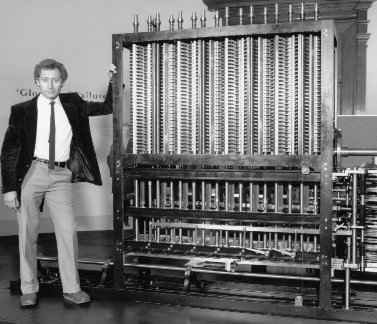
Babbage (British) started working in the field of machinery in 1821, he believed that there would be a machine that could perform operations faster and more accurately than humans. In 1834, his calculator was born, although not yet complete, but a significant event. For the first time an analyzer can be programmed with a large number of operations.
The original design was rudimentary, but included most of the features of a modern electronic digital computer later. This machine is programmed using punched cards. It stores numbers, instant results and has a separate 'mill' where the algorithms are processed. The separation of storage (memory) and 'mill' (processor) is the foundation for modern computers.
2. October 22, 1925: Patented semiconductor device (transistor)
Although Julius Edgar Lilienfeld never put his design into practice, the patented, 1925 patented device was developed, perfected and produced as it is today. The development is very slow because in the 1950s transistors began to replace vacuum tubes in computers, allowing devices to be smaller and more accurate.
3. 1-1-1939: Hewlett-Packard was founded, the birth of Silicon Valley (USA).
Bill Hewlett and Dave Packard, friends at Stanford University (USA), decided to work together at the end of 1930. In 1938 they began producing oscillators to test audio equipment, at one Small after-house warehouse No. 367 Addison Avenue, Palo Alto. This is also the beginning of Silicon Valley's birth.
Successful oscillator, Hewlett and Packard leaders officially worked with partners. The company develops fast, introduces new products and has open management style. HP today is one of the largest computer manufacturers.
4. November 25, 1943: Colossus was born
The Colossus is an electronic calculation device built and used by British decoders to read Nazi encoded messages during the Second World War. This is the world's first computerized, electronic, digitized and programmable device. Use vacuum tubes to perform calculations.
Colossus was designed by Tommy Flowers engineer with the support of Allen Coobs, Sid Broadhurst and Bill Chandler in the Post Office (UK) department. Model Colossus Mark 1 introduced in December 1943. Then improved into the Colossus Mark 2 operating in July 1944.
The birth of Colussus signaled the era of computer participation in the war.
5. February 14, 1946: ENIAC inaugurated
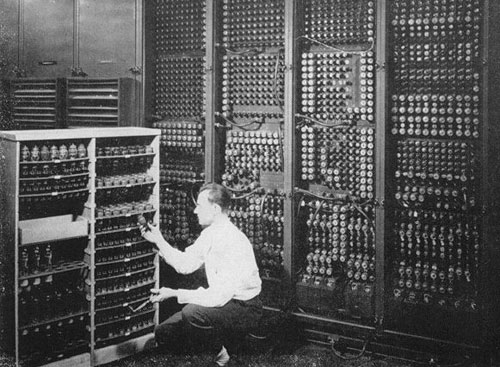
ENIAC, short for Electronic Numerical Integrator and Computer, was created after the Second World War by the US military. The computer is the size of a room, built from 18,000 vacuum tubes (while Colossus is only 1,500), so it is stronger and more flexible.
ENIAC can perform 5,000 calculations per second, 1,000 times faster than any computer at that time. ENIAC was deactivated in 1955.
6. December 1954: Casio's desktop model
The 14-A model is described as a compact brain with a 1m width and 140kg weight. This machine made a revolution in being able to calculate everything with electronic devices. The company later launched more compact machines, better features, cheaper. 15 years later is still an attractive product for users.
7. September 4, 1956: the birth of IBM 305 RAMAC
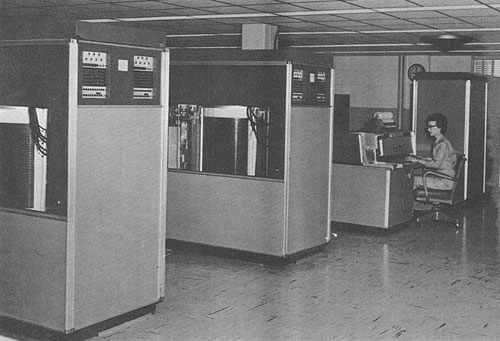
305 RAMAC, the first hard drive device was born. From here the computer can store digital data. At first it stored a very small amount of information less than 5MB. Even a USB now has hundreds of times the storage capacity of this machine.
8. October 29, 1969: Dawn of the Internet era
In 1969, researchers at the Department of Defense's research department used telephone lines to connect two computers together, one in Los Angeles and one at Stanford University near San Francisco. This is the first experiment to produce ARPANET and then the Internet.
9. November and 12-1971: the first email was sent
The first message sent between two computers appeared and was sent by Ray Tomlinson, an American computer programmer in late 1971. He did not remember the exact date and details of the message being sent. He did not invent the @ sign even though he was the first to send an email.
10. April 16, 1977: Apple II announced the era of home computers
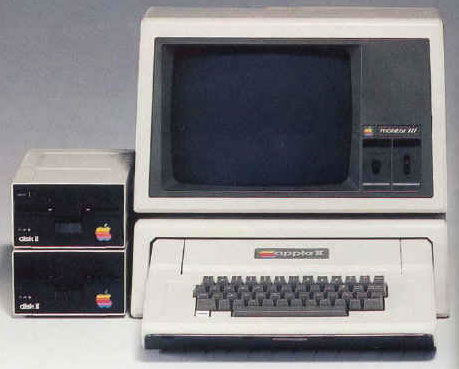
Steve Jobs and Steve Wozniak produced the first Apple computers. Apple I is manufactured by hand and sold only in small quantities. But Apple II has come closer to predicting computers not only created by humans, but also as a friend of people, Computers are a part of technology that enriches personal life.
Initially Apple I and II machines have small spreadsheet applications, which can be used in business schools and families. This model was upgraded in the 1980s and the number sold up to 5 million units.
11. May 22, 1980: Born Pac-Man
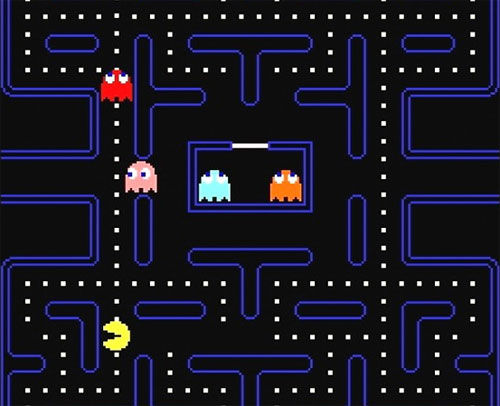
The world famous game starts from Puck Man. This Game software was created by Namco Bandai Game Company of Japan. Then changed the name to Pac-Man. Very popular in the US, running on any supported computer platform. This game appeals to more people than previous games.
12. On 3-4-1981: the first laptop was born
At first it looked more like a pair of handbags than a modern laptop, weighing 10kg and having a 5-inch screen. But it was really the first portable computer ever released. This device proves computers not only for school and office, but also for carrying anywhere. A first step towards computing everywhere.
13. August 12, 1981: IBM released 'PC'.
IBM entered the home computer market without advanced technology, but their product became the model for the earliest computer. This is because IBM computers are not too closed but open to meet the potential of the future as removable and upgraded components. Because it is open, it allows manufacturers of low cost devices to compete.
For the first time, IBM teamed up with other technology companies to produce their computers, such as processors from Intel, operating systems from Microsoft. Two years later, the operating system won and became the benchmark for IBM's 16-bit generation.
14. Date 3-3-1981: BBC Microcomputer
Little known outside the UK, the Microcomputer BBC brings British children about 8 years old to taste computers. BBC Micro is produced by Acorn. Cheap, powerful and progressive, it becomes a teaching device. BBC Micro sold 1.5 million phones.
15. January 24, 1984: Apple Mac popularized the graphical user interface (GUI user interface).
Apple did not invent a graphical interface but Xerox, but Apple's Macintosh gives users the simplest way to work with computers. Mac came with mouse (mouse), which can control the computer through icons (icons) and menus (menus) more easily than working with the command line (command lines).
16. November 13, 1990: Tim Berners-Lee wrote the first website
Based on the design details proposed for the previous world wide web, Tim Berners-Lee did not spend much time creating a website. The Web is now used as an alternative to the Internet. People can store information on the internet and deliver it to users by websites.
17. March 14, 1993: Mosaic operating system explores the web
Mosaic supports reading websites. Mosaic introduces bookmark patterns (bookmarking web pages) and history (which we often use today). In addition, an important feature of the Mac is the 'image' tag, which allows images and text to appear on the web at the same time. Mosaic succeeded with Netscapte Navigator (web browser), before being defeated by Microsoft's Internet Explorer.
18. Date 16-3-1995: The first Wiki was introduced
Based on the web platform, people build open information systems. The incident began in 1995 when Ward Cunningham (American) set up a database that could be changed and created by anyone. One can search for multi-field information from this open library. Today it evolves into Wikipedia with many articles in many different areas.
19. July 4, 1996: Hotmail mailbox launched

This is a webmail system on the Internet, very useful for non-tech users. This system is an open door for users to enter the Internet world simply allowing people to send and receive email via the Internet. Hotmail opened a revolution that people use more email for work, for relationships.
20. May 11, 1997: computer wins people in chess
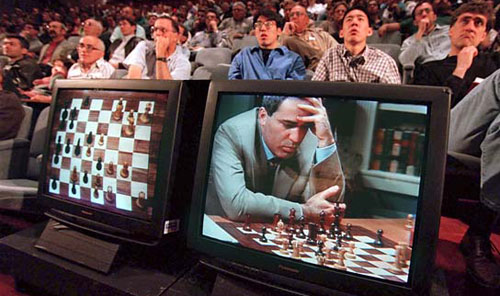
Garry Kasparov, the Russian chess king, won the previous Deep Blue supercomputer, but was defeated by Deep Blue later. This is an example of a great computing power of a computer.
21. November 18, 1997: Wi-Fi standard was released
IEEE 802.11 wireless networking standards have opened up new revolution for the Internet. People can anywhere connect to the Internet as long as they have the right equipment. Today wireless connectivity technology continues to improve.
22. September 7, 1998: Google was founded
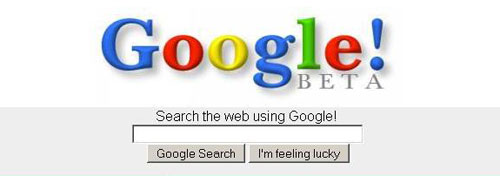
Larry Page and Sergey Brin founded Google, the machine realizes their search idea after having a large number of users. A few years later, Google became the gateway to the web world for millions of users around the world seeking information. Google also launched many other services such as Google Earth, Google Maps and Google Books to meet users' search needs. Today Google leads the search field with market share superior to other competitors.
23. June 1, 1999: Shawn Fanning launches Napster
Computing and the Internet have a profound effect on most businesses, but only have less impact on the recording music industry. The digital revolution happened with Shawn Fanning when he sent 30 friends a program that allowed them to share and exchange music online. A year later, more than 25 million people downloaded Napster but a year later the Napter got bogged down in law because record labels wanted them to stop due to copyright issues. But music sharing and peer-to-peer file sharing still exist.
24. On 1-1-2000: the world continues
People worry about the Y2K incident (the previous programmer's error only used the last two numbers to store the year, but did not anticipate that after 2000, the year will return to 00 so the computer understands like 1900 ), affecting the entire computing world. But that did not happen.
25. February 15, 2005: YouTube was born
This is a cult website of WEB 2.0 generation. This social networking website allows users to upload (upload) video files created online or view other files posted by other users. It was very successful, creating a wave of online video websites. Google bought this website for a record price.
26. July 11, 2008: Apple launches the iPhone App Store
App Store, part of iTunes, is intended to host iPhone programs created by independent developers but adopted by Apple. It turns the iPhone into a flexible computing platform with the potential to impress users.
 The internet is very useful for teenagers
The internet is very useful for teenagers How will Web 3.0 work?
How will Web 3.0 work? Choose to buy an old CRT monitor 'long live'
Choose to buy an old CRT monitor 'long live' How to connect to a VPN server from Windows XP
How to connect to a VPN server from Windows XP Google upgraded Bookmark for Chrome
Google upgraded Bookmark for Chrome 5 commands to troubleshoot virtual networks
5 commands to troubleshoot virtual networks